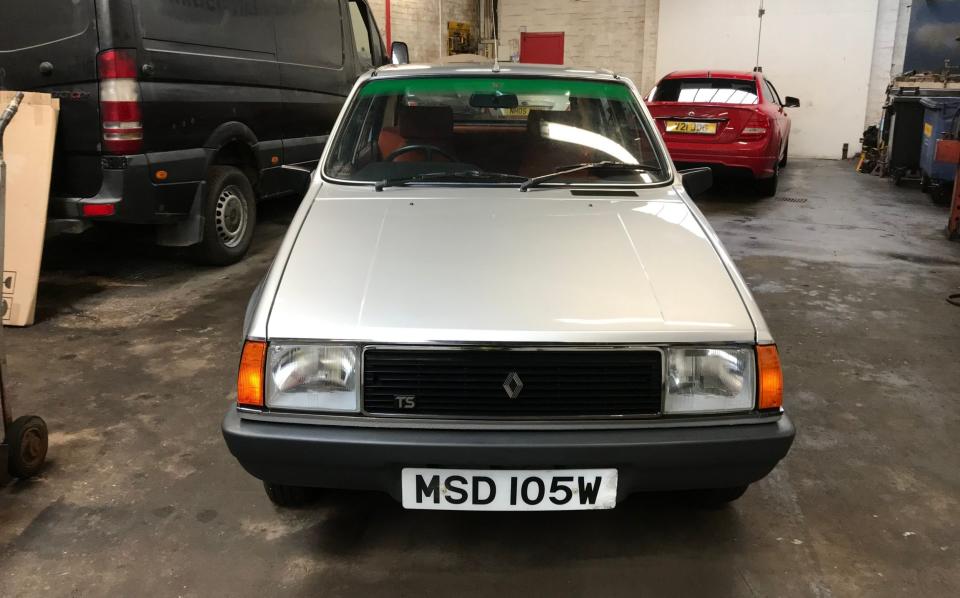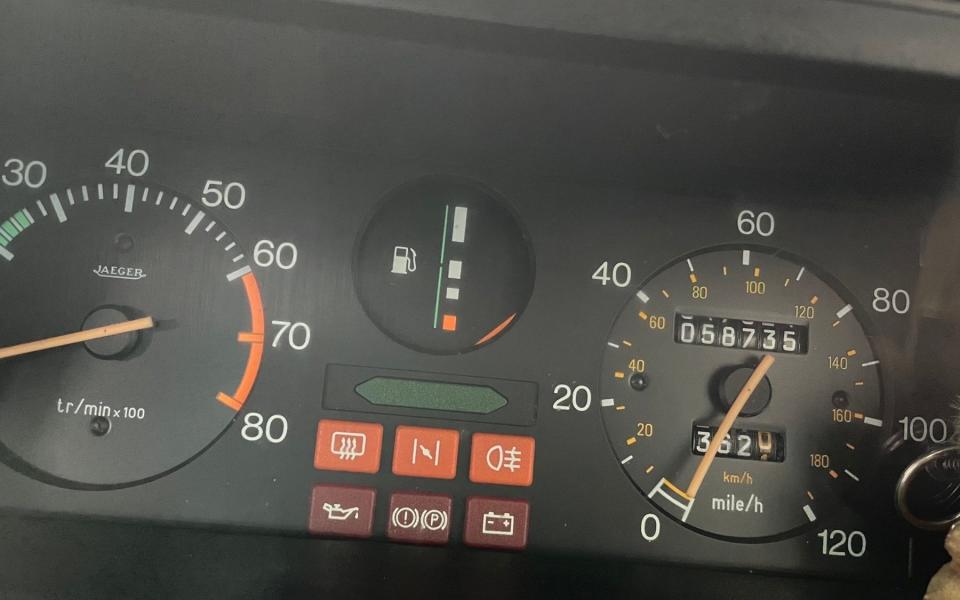UK’s rarest cars: 1981 Renault 14, one of only six left on British roads

In theory, the Renault 14 should have been the French manufacturer’s alternative to the original Volkswagen Golf. In practice, it suffered from an offbeat appearance and a well-founded reputation for corrosion. Only six of all types remain in use, and only one of these is a flagship TS version such as this, which Kenneth Campbell’s father acquired new on 25 March 1981.
Renault devised Project 121 to bridge the gap between the compact 5 and the 16 family car, combining a new five-door body with the 12’s floorpan. It was also its first transverse-engined car, powered by the all-alloy “Douvrin” 1.2-litre single-overhead camshaft unit jointly developed with Peugeot.
The 14 was unveiled in January 1976, but financial problems and industrial disputes delayed its public launch until 25 May. In celebration, Renault arranged for a fleet of 500 of them to be driven 120 miles from its Douai factory in the north of France, to Paris.

UK sales started in early 1977, accompanied by an elaborate publicity drive. Here was a hatchback designed “to cope comfortably with a family of five Continental gourmets and one greedy dog”, while parking was “as comfortable as parking your behind.” Just as Carry On Doctor seemed to influence the print sales campaign, the 14’s television/cinema advertisements resembled a Brian Rix farce.
To further ensure that every Briton would be aware of the 14, Renault backed Bruce Forsyth’s stage shows at Wembley Stadium, Bristol and Liverpool, where audience members had the chance to win the latest model. By the decade’s end, the 14 was second to the 5 as the company’s most popular model in the UK, while in their French home market they were seen in reasonable numbers.
Yet the 14 did not fulfil Renault’s sales predictions. One problem was service departments unfamiliar with transverse engines; another was a penchant for rust. A 1977 French advertising campaign, “La Poire”, resulted in the nickname “the rotten pear.”
In an attempt to enhance the 14’s image, the 1978 limited edition Safrane had an aluminium plate for the owner’s initials. According to Renault, this was “For the aristocratic personal touch.”
The following year the range was facelifted and included the introduction of the 1,360cc TS flagship model. Motor regarded it as suited to “those who put comfort above roadholding and handling, in a spacious, refined and very well sprung car.” Furthermore, equipment that included electric front windows and central locking “should appeal to sybaritic customers.”

A five-speed gearbox became available for the 1982 model year and when Autocar sampled the latest TS it thought a lack of stability marred “an otherwise excellent car.” However, the report also praised the Renault’s performance, economy, ride and equipment, while at £5,049 it cost almost £900 less than a top-of-the-range Ford Escort Mk3 Ghia. But too many drivers preferred the Ford or the Vauxhall Astra. As a peppy alternative, there was the Alfasud 1.3 Hatchback – as corrosion-prone as the 14, but nearly £500 cheaper.
Renault originally envisaged building 2.5 million 14s, but when the 11 replaced it in 1983, total sales amounted to only 993,193.
Nearly 40 years later, Campbell owns one of the most exclusive vehicles to wear the diamond badge, and it looks as though it belongs in Renault’s 1982 brochure.

Campbell greatly enjoys driving the 14 TS, saying: “It can keep pace with modern cars, although the engine will be working harder. The steering today would be classed as heavy, with traditional French suspension meaning body roll in corners. The seats are very comfortable, and the trade-off for soft suspension is ride comfort on today’s potholed roads.”
He finds that today, very few people recognise his TS and that the 14 is somewhat of a forgotten Renault compared with the 4, 5 or 12. It was certainly not the French brand’s only rust-prone 1970s product, but that reputation damaged the 14’s chances in a very competitive market sector. Nor did its blobby appearance tally with the marque’s image in the late 1970s.
Yet, despite all of that, Campbell’s car is a reminder of the 14’s potential, with that sporting black stripe a sure sign of the promised “performance and luxury.”

 Yahoo News
Yahoo News 